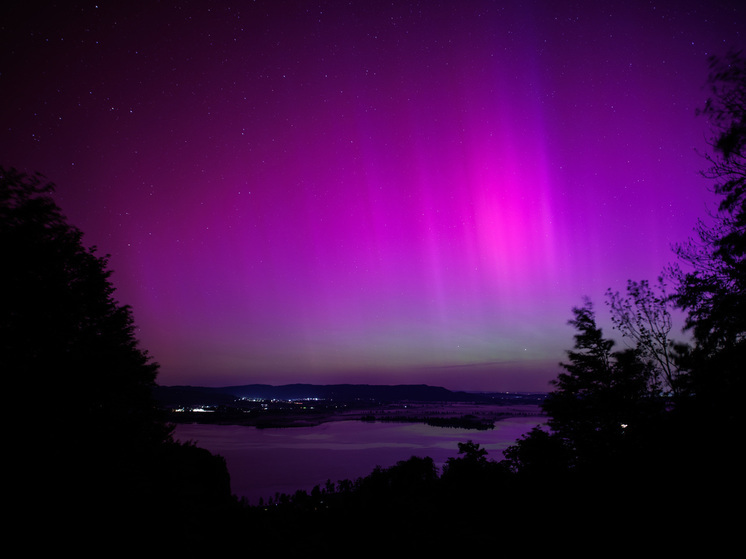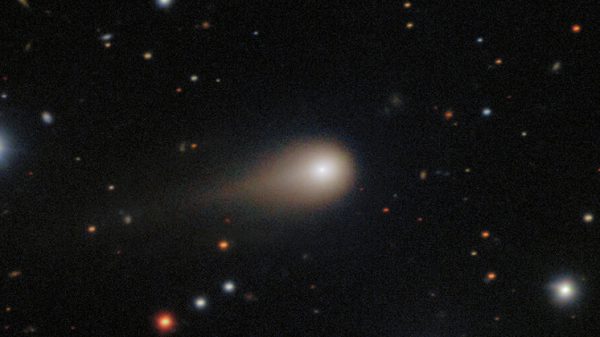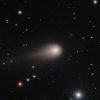Frequent solar storms have indicated the development of dangerous consequences for people
Scientists know that geomagnetic storms caused by solar activity can destroy critical infrastructure, but identifying the dangerous ones has not been easy. Auroras are beautiful, but they can also signal dire consequences. New research may help to better recognize hazardous phenomena.

The risk of a solar storm destroying power grids and undersea cables, and even civilization itself, depends on the angle at which it hits Earth's magnetic field and the local time of day. Unsurprisingly, the strength of the incoming push is also important, but the new study highlights the influence of the angle at which irregularities in the solar wind occur. This work will improve predictions of which tremors will be the most dangerous, allowing for mitigation measures to be taken.
Since the Sun is around the maximum of its cycle, the main effect that most people experienced were the beautiful auroras. Several radio communications were disrupted, but without significant damage. However, the history of past events shows that something much more serious is possible, and our technology is making humanity much more vulnerable than ever before.
Although auroras are ultimately the result of coronal mass ejections (CMEs) lifting plasma from the Sun, most of them do not cause auroras, let alone destruction. This is due to the fact that the vast majority of cosmic rays are not directed towards the Earth — this is a large solar system, and the planet of humanity — Quite a small target. When something hits the Earth's magnetic field, it most often happens at an angle high enough to cause a glancing blow rather than a direct hit. This reduces the strength of auroras, but since negative effects are less common, knowledge about its effects is still insufficient.
The reason CMEs have become a much bigger threat recently is that they can create currents in long stretches of conductive material. This didn't matter when the spear was the longest piece of metal in the world, but modern power lines and pipelines — a completely different matter.
«Auroras and geomagnetic-induced currents are caused by similar space weather factors,” — Dr. Denny Oliveira of NASA's Goddard Space Flight Center told Frontiers News. He added that the aurora — this is a visual warning indicating that electrical currents in space can generate these geomagnetic induced currents on earth.
Most auroras are only observed in the polar regions, but in May of this year they were seen at latitudes less than 30 degrees. Induced currents are also most common near magnetic poles. Even in places as far from the poles as Perth, Australia, where magnificent auroras were observed in May 2024.
Auroras are known to occur when solar particles are caught in the Earth's magnetic field, which directs them toward the magnetic poles, where they ionize molecules in the atmosphere. However, a secondary mechanism is the compression of our magnetic field due to so-called interplanetary shocks caused by changes in the density and temperature of the solar wind. It is the latter component that creates ground currents.
“Perhaps the most severe negative impact on energy infrastructure occurred in March 1989 after a severe geomagnetic storm – Canada's Hydro-Quebec system was shut down for nearly nine hours, leaving millions of people without power,” — Oliveira emphasized.
A team of scientists compared the angles and times of day of 332 tremors that occurred between 1999 and 2023 with the currents that arose in a gas pipeline in Mäntsälä, Finland.
The strongest currents (more than 20 amperes) occurred during the strongest shocks and around midnight, when the north magnetic pole was between Mäntsälä and the Sun. Unsurprisingly, this coincided with strong auroras, but at this latitude auroras occur much more frequently.
«Moderate currents occur shortly after the disturbance, when Mäntsial has reached twilight local time, while more intense currents occur around midnight local time,” — Oliveira explained.
It takes days to travel from the Sun to Earth, but scientists cannot predict their appearance with any accuracy during much of that time, causing great frustration for aurora hunters. However, according to Oliveira, the angle of impact was fairly well known two hours before. This is much more useful than the half-hour warnings that NASA recently began issuing.
However, the data that Oliveira and his colleagues used did not show a clear relationship between the angle of impact and the delay before the current appears. If other methods fail to solve this problem, the infrastructure will have to remain in a safe mode for longer than would be ideal for normal operation after each strike.
«Even though Mäntsala is in a critical situation, this does not give a complete picture around the world. In addition, the data for Mäntsala were missing several days during the study period, which forced us to exclude many events from our shock database. It would be nice if the world's energy companies provided scientists with access to their data for research,” — Oliveira noted.






















































Свежие комментарии